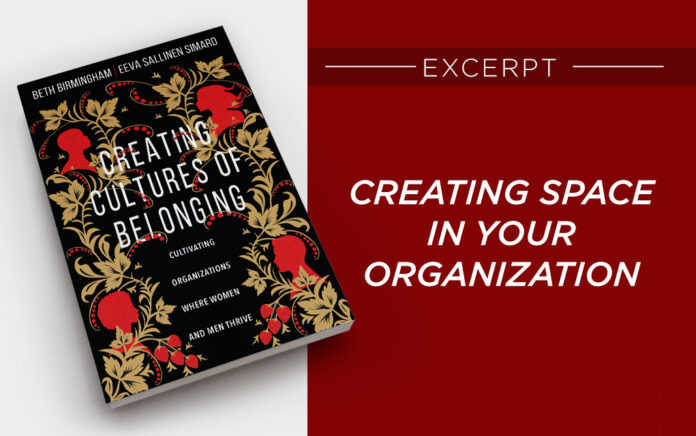Organizational cultures are born in the intersections of shared relationships. If the quality of those relationships is healthy and constructive, that’s the kind of culture we’ll experience. If those relationships are toxic and fear-filled, well, that’s exactly the culture we’ll bear witness to. Cultures of belonging are built on the belief that the relationships within our organization can be healed and so can our organizational cultures. This healing depends not just on reconciliation between people inside our organizations now but also on examining who has been left out. To share kingdom relationships, no one can be left out of the equation.
Perhaps your organization has tried to create a more diverse organization but has been frustrated when those efforts came up short. We present this model as necessary in addressing the whole system of your organization to create space for underrepresented voices, whether that is women, BIPOC leaders, or people of different nationalities.
Imago Dei
First and throughout the process, becoming a belonging culture requires that we see the image of God in each other. Men need to see and recognize that God made women in his image and for his purposes and gifted them for that calling. Those gifts include leadership, preaching, and teaching.
Women need to see the image of God in the men who have hurt them and marginalized them. It’s too easy to demonize a man who doesn’t know any better, who has been socialized in wrong beliefs about women and hasn’t been held accountable until now for bad behaviors. To borrow the title of Bishop Tutu’s book, there is no future without forgiveness.
Strategic Case
While it offends many women that this is required, it has taken “the strategic case” as a point to convince leaders that creating more diverse leadership and highlighting the influence of women is good for the organization and its performance outcomes. And there’s research to support that reality. Significant representation of women in leadership (35 percent or more) is not a “nice to have” but a strategic necessity.
Organizational Culture
You can see the image of God in each other, you can make the strategic case for why change is necessary, but if you don’t tackle the organizational cultures that were originally created by men to welcome only men, you will see women “check out” either emotionally or physically from your organization, exacerbating the likelihood that you’ll be able to recruit any in the future. How is performance measured, who gets celebrated, what toxic behaviors are supported or ignored for the sake of “more and better” ministry?
Human Resource Policies and Practices
From throwing the recruiting net to celebrating the exit and retirement of employees, there’s bias in the system that embraces male behaviors and diminishes women’s behaviors. This shows up in how women show up in interviews, views of what “leadership track material” looks like, and how women are judged for aggressively promoting themselves and negotiating raises, when those are expected of men. We can see each other as the image of God, understand the business case, and begin to address culture, but if HR practices and policies aren’t examined from beginning to end, the movement of the culture will be much harder.
Intentional Development
Even if all of these previous levers have been pushed, perhaps your organization has spent decades favoring the development of men over women when it comes to leadership and influence. Perhaps the message you’ve given is that women need to “show up” more like men—until they do and are admonished for it. A culture of belonging needs to intentionally develop everyone if it is going to rewrite the curriculum scripts on what good leadership and influence look like. Women too need to overcome mental hurdles by believing that the way God has equipped them for leadership is leadership. Not a mistake, not an accident. They are his beloved, called for his purposes, and equipped for his work.
Leadership Will
This lever is actually first and last. None of these changes will be implemented unless existing leaders have the courage and the will to recognize the image of God they have diminished in women, the strategic case for better performance of their organization, and understanding that the whole organizational system has been working against a belonging culture all along. Systems can be changed. But this requires much more than a heartwarming public statement of affirming diversity. It requires the backbone to start and stay the course to see it through to bearing fruit.
Does all this feel like too much? It shouldn’t. In our combined thirty-plus years in the sector, we have watched far more ambitious “global change” agendas executed in missional organizations with far fewer necessary outcomes. Creating a belonging culture will be the legacy you leave because it will forever change the positive outcomes of your organization. Everything else you do for the success of your organization and the communities you serve will pale in comparison to this endeavor.
Adapted from Creating Cultures of Belonging by Beth Birmingham and Eeva Sallinen Simard. ©2022 by Beth Birmingham and Eeva Sallinen Simard. Used by permission of InterVarsity Press. www.ivpress.com.

